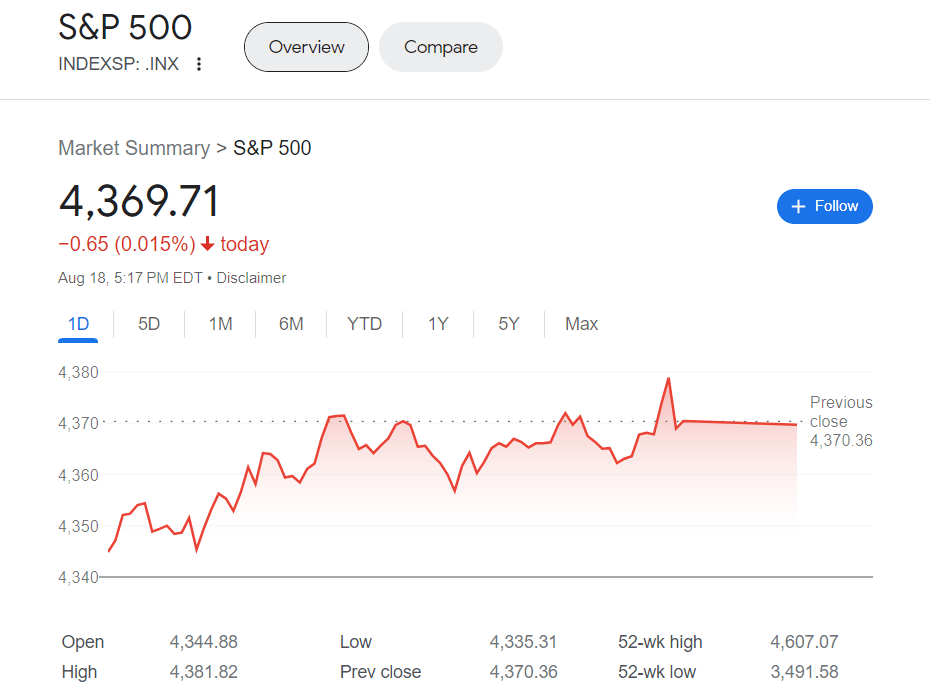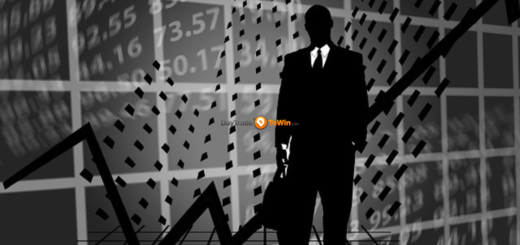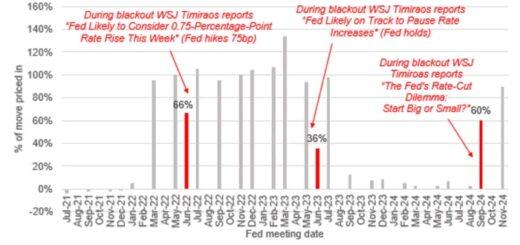Analyzing August’s Stock-Market Trends: Will the Stumble Transform into a Rout?
The drop in the American stock-market rally in August 2023 was anticipated.
In a note on Friday morning, Tom Lee from Fundstrat stated that the S&P 500’s recent decrease of 5.6% over a 15-day period is a usual situation for August. Despite this, Lee, who is well-known for his positive outlook on the stock market, expects this decline to be temporary and connected to the month of August.
In August, there are usually difficulties in the financial market, with high levels of unpredictability seen in the VIX reaching its highest point. Moreover, trading conditions tend to have low activity, particularly towards the end of the month, as the holiday season ends. The speaker states that stocks are being sold off due to several reasonable factors. These factors consist of a 50 basis point rise in the 10-year Treasury yield, causing it to reach its highest level in 15 years, the strengthening of the US dollar, and a long-awaited increase in the Cboe Volatility Index.
Both the S&P 500 index and Nasdaq Composite suffered losses for the third week in a row on Friday. Additionally, the Dow Jones Industrial Average experienced a decline of 2.2% for the week.
According to Lee’s definition, what conditions must be met in order for the slide to be classified as a significant decline, which is a 10% decrease leading to the S&P 500 reaching the level of 4,150?

In order for the increase in yields to have a notable effect, Lee states that it would either have to present a risk of causing significant harm or require some other external disruption.
Lee stated that he is not claiming that this is an impossible scenario. He gave an example to support his point, stating that if there is a sudden 10% rise in oil prices along with indications of increasing wages, it could potentially result in a larger decline in market value. The reason for this is that such factors might raise doubts among investors about the consistency of inflation reduction.
Lee states that at present, inflation is not the primary worry for investors as their attention is primarily directed towards the rising bond yields, which have a detrimental impact on price-to-earnings ratios. They are also apprehensive about the prospect of a stronger U.S. economy, which could lead to the Federal Reserve implementing further interest rate hikes. Furthermore, Lee highlights the slight concerns among U.S. investors regarding weak economic data and property matters in China.
Lee mentioned that there are signs in the market suggesting that stability may soon return.
Firstly, he stated that the acceleration in the rate at which the 10-year yield is increasing is having a negative effect on stocks. However, it is not unusual for such abrupt increments to occur towards the end of a period when equities are being sold. He highlighted that the recent 50 basis point rise in the Treasury 10-year yield, which happened in just 21 days, is comparable to the increases in yield that were observed on September 23rd and March 2nd in the previous year. It is important to note that during those occasions, stocks reached their lowest point between 8 and 16 days later.
Furthermore, the McClellan Oscillator reveals that there is currently an excess number of stocks, with a value of -50. This particular situation has only happened on 39 occasions since 1990. Lee’s analysis suggests that in 51% of these occurrences, stocks reached their lowest level within five days, while in 72% of cases, stocks reached their lowest level within 15 days.
Lee proposed some dates that could hold importance for the future of the market. One of these dates is August 24th, which comes after Nvidia, a company that manufactures chips, discloses its financial performance for the second quarter. The outstanding outcomes that Nvidia achieved earlier in the year were understood to have sparked enthusiasm around artificial intelligence, ultimately causing a rise in the stocks of major technology companies.
On Friday, August 25th, investors will be paying attention to Federal Reserve Chair Jerome Powell, who is scheduled to deliver a speech at the annual symposium of the Kansas City Fed in Jackson Hole, Wyoming.
Lee remembered that Powell’s speech in Jackson Hole last year indicated the conclusion of a recovery for the S&P 500, resulting in a subsequent drop of 19% in stock prices over the ensuing eight weeks.
He was unsure if stocks would see a 20% increase after this year’s Jackson Hole conference, but he admitted that unforeseen events could still happen.




